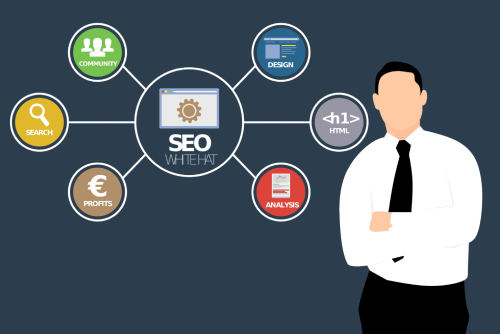It is a long established fact that a reader will be distracted by the readable content of a page when looking at its layout.
It is a long established fact that a reader will be distracted by the readable content of a page when looking at its layout.
It is a long established fact that a reader will be distracted by the readable content of a page when looking at its layout.
It is a long established fact that a reader will be distracted by the readable content of a page when looking at its layout.
It is a long established fact that a reader will be distracted by the readable content of a page when looking at its layout.
It is a long established fact that a reader will be distracted by the readable content of a page when looking at its layout.
1. Performance Report
- Shows website performance in Google Search results.
- Key metrics:
- Clicks (Users who clicked on your website from search results).
- Impressions (Number of times your website appeared in search results).
- CTR (Click-Through Rate) = (Clicks / Impressions) * 100%.
- Average Position (Ranking position of your pages).
- Filters:
- Search Type: Web, Image, Video, News.
- Date Range: Last 7 days, 28 days, 3 months, etc.
- Queries: Keywords users searched.
- Pages: Performance of individual pages.
- Countries: User locations.
- Devices: Mobile, Desktop, Tablet.
2. URL Inspection Tool
- Checks if a URL is indexed by Google.
- Shows indexing status, crawling issues, and structured data validation.
- “Request Indexing” option for faster indexing.
3. Indexing
- Pages:
- Shows which pages are indexed or not.
- Reports errors like “Crawled – currently not indexed” or “Discovered – not indexed.”
- Sitemaps:
- Submit XML sitemaps for better crawling.
- View the last crawl date and errors.
- Removals:
- Temporarily remove URLs from Google Search.
- Clear cached URLs from search results.
4. Experience (User Experience Reports)
- Page Experience: Checks Core Web Vitals (LCP, FID, CLS).
- Core Web Vitals: Measures page loading speed and interactivity.
- Mobile Usability: Detects mobile-friendliness issues.
5. Enhancements
- Breadcrumbs: Ensures structured breadcrumb navigation.
- Sitelinks Search Box: Helps with internal search functionality.
- Product Schema: Checks structured data for eCommerce sites.
- Review Snippets: Validates rich results like star ratings.
6. Security & Manual Actions
- Manual Actions: Alerts for penalties (spammy backlinks, thin content, etc.).
- Security Issues: Detects malware, hacked content, and phishing.
7. Links (Backlink Analysis)
- Top Linked Pages: Shows which pages have the most backlinks.
- Top Linking Sites: Displays websites linking to your site.
- Top Anchor Texts: Shows most common anchor texts used.
- Internal Links: Identifies internal linking structure.
8. Settings & Legacy Tools
- Users & Permissions: Add or remove users with different access levels.
- Crawl Stats: Shows Googlebot’s crawling activity.
- International Targeting: Sets up hreflang for multilingual sites.
- Messages: Receives notifications from Google about issues.
Social media marketing (SMM) is a crucial aspect of digital marketing due to its ability to reach a vast audience, foster engagement, and drive traffic. Here’s the importance of social media marketing in todays world.
Importance of Social Media Marketing in Digital Marketing
- Wide Audience Reach: Platforms like Facebook, Instagram, Twitter, and LinkedIn have billions of active users, providing brands with extensive reach and the ability to target specific demographics.
- Enhanced Engagement: Social media platforms allow for direct interaction with customers through comments, messages, and posts, fostering a sense of community and improving customer relationships.
- Brand Awareness and Loyalty: Regularly posting content helps to keep the brand top-of-mind, building familiarity and trust with the audience.
- Cost-Effective Advertising: Social media platforms offer affordable advertising options with advanced targeting capabilities, allowing brands to reach their ideal customers without a hefty budget.
- Real-Time Analytics: SMM provides immediate insights into performance metrics such as engagement, reach, and conversions, Moreover, enabling real-time adjustments to marketing strategies.
- SEO Benefits: Social media activities, such as sharing content and generating backlinks. It can enhance SEO efforts by driving traffic to the website and improving search engine rankings.
Important Terms Related to Facebook Marketing
- Facebook Ads Manager: The platform where you create, manage, and monitor Facebook ad campaigns. It allows for setting up target audiences, budgeting, and analyzing performance.
- Facebook Pixel: A piece of code that you place on your website to track visitor actions and conversions. It also helps in optimizing ad campaigns by gathering data on user behavior.
- Custom Audiences: A feature that allows you to target ads to a specific group of people based on their interactions with your business, such as website visitors, app users, or customers.
- Lookalike Audiences: This tool helps you find new potential customers by targeting people who resemble your existing audience, based on data collected from your Custom Audiences.
- Engagement Rate: A metric that measures the interaction between your content and users, including likes, comments, shares, and clicks. It’s a key indicator of how well your content resonates with your audience.
- Boost Post: A paid option that allows you to increase the visibility of a post to a broader audience outside your organic reach. It’s a simple way to promote content without creating a full ad campaign.
- Facebook Business Suite: A platform that allows businesses to manage their Facebook and Instagram accounts, including posting content, messaging, and viewing insights from one place.
- Ad Relevance Score: A metric that indicates how well your ad is resonating with your target audience. It is determined by factors like engagement, conversions, and the relevance of the ad to the audience.
These terms are fundamental to understanding and leveraging Facebook marketing effectively within a broader digital marketing strategy.
In SEO (Search Engine Optimization), keywords are terms or phrases that describe the content on a webpage and help search engines understand what the page is about. Here are different types of keywords in SEO and their applications:
1. Short-Tail Keywords
- Description: These are broad and general keywords, typically consisting of one or two words.
- Example: “Shoes”
- Application: Short-tail keywords have high search volume but are highly competitive. They are useful for attracting a large audience but may not convert well due to their broad nature.
2. Long-Tail Keywords
- Description: These are more specific phrases, usually containing three or more words.
- Example: “Best running shoes for flat feet”
- Application: Long-tail keywords have lower search volume but are less competitive and more targeted. They are effective for attracting a niche audience and often result in higher conversion rates.
3. LSI (Latent Semantic Indexing) Keywords
- Description: These are keywords that are semantically related to the main keyword.
- Example: For the main keyword “Apple,” LSI keywords might include “iPhone,” “MacBook,” or “iOS.”
- Application: LSI keywords help search engines understand the context of the content, improving relevance and reducing the likelihood of being seen as spam.
4. Branded Keywords
- Description: These are keywords that include a brand name.
- Example: “Nike running shoes”
- Application: Branded keywords are used by people who are already familiar with a brand. They are useful for brand awareness and attracting a loyal audience.
5. Non-Branded Keywords
- Description: These are keywords that do not include a brand name.
- Example: “Running shoes for men”
- Application: Non-branded keywords target a broader audience who may not be familiar with specific brands. They are essential for reaching new customers.
6. Commercial Intent Keywords
- Description: These keywords indicate a user’s intent to make a purchase or take a specific action.
- Example: “Buy iPhone 14 online”
- Application: Commercial intent keywords are valuable for conversion-focused content, such as product pages or service offerings.
7. Informational Keywords
- Description: These keywords indicate that the user is looking for information or answers to questions.
- Example: “How to train for a marathon”
- Application: Informational keywords are ideal for blog posts, tutorials, and educational content. They help in building authority and attracting visitors in the awareness stage of the buyer’s journey.
8. Navigational Keywords
- Description: These keywords are used when the user is trying to find a specific website or webpage.
- Example: “Facebook login”
- Application: Navigational keywords are important for optimizing the search experience for users who are trying to reach a specific destination online.
9. Transactional Keywords
- Description: These are keywords used by users who are ready to make a purchase.
- Example: “Order pizza online”
- Application: Transactional keywords are crucial for e-commerce sites and landing pages designed to convert visitors into customers.
10. Local Keywords
- Description: These keywords include geographical locations and are used to target a local audience.
- Example: “Best pizza in New York”
- Application: Local keywords are essential for businesses with a physical location or those offering services in specific areas. They are critical for local SEO strategies.
11. Seasonal Keywords
- Description: These keywords are related to specific times of the year or events.
- Example: “Christmas gift ideas”
- Application: Seasonal keywords are used in campaigns tied to holidays, events, or seasonal trends. They can drive significant traffic during specific times of the year.
12. Competitor Keywords
- Description: These are keywords that your competitors are ranking for.
- Example: Keywords that competitor sites rank highly for.
- Application: Analyzing and targeting competitor keywords can help in outranking them in search results and capturing their audience.
13. Evergreen Keywords
- Description: These are keywords that remain relevant over a long period.
- Example: “How to lose weight”
- Application: Evergreen keywords are great for content that is always relevant and can continuously attract traffic.
14. Geo-Targeted Keywords
- Description: These are keywords targeting a specific location or region.
- Example: “Best cafes in Paris”
- Application: These keywords are essential for businesses aiming to attract customers from a specific geographical area.
By understanding and using these different types of keywords in SEO , you can improve your SEO efforts and better target your desired audience.
We have two more important types of keywords: Primary & Secondary.
Primary Keywords and Secondary Keywords are essential components of an SEO strategy, each playing a distinct role in optimizing content for search engines.
Primary Keywords
- Definition: Primary keywords are the main focus of a piece of content. They represent the central theme or topic of the content and are usually the most competitive and most searched-for terms related to that topic.
- Example: If you’re writing an article about “Healthy Eating Tips,” your primary keyword might be “healthy eating.”
- Application:
- Content Focus: The entire content is structured around the primary keyword. It appears in the title, meta description, URL, headings, and throughout the body of the content.
- SEO Optimization: The primary keyword is used to optimize the content for search engines, ensuring that when users search for this term, the content is likely to appear in search results.
- Conversion Goals: Primary keywords are often tied to key business goals, such as driving traffic, generating leads, or boosting sales.
Secondary Keywords
- Definition: Secondary keywords are supplementary terms related to the primary keyword. They are less central but help support the primary keyword by covering related subtopics or additional aspects of the main topic.
- Example: Continuing with the “Healthy Eating Tips” article, secondary keywords might include “balanced diet,” “nutritious meals,” “healthy food choices,” and “dietary guidelines.”
- Application:
- Content Depth: Secondary keywords help add depth and variety to the content. They allow the article to cover a broader range of topics, providing more comprehensive information to the reader.
- SEO Optimization: Including secondary keywords helps improve the content’s relevance and semantic richness, which can boost its ranking for related search queries.
- Long-Tail Traffic: Secondary keywords often include long-tail variations, which can attract visitors searching for more specific or niche information.
How They Work Together
- Content Structuring: Typically, the primary keyword will guide the overall direction of the content, while secondary keywords will be used to structure subheadings, paragraphs, and additional sections.
- SEO Synergy: Together, primary and secondary keywords create a well-rounded and optimized piece of content that can rank for a broader set of search terms, attracting a wider audience.
- User Intent: The primary keyword addresses the main search intent, while secondary keywords address related intents, ensuring that the content meets the diverse needs of searchers.
In summary, the primary keyword sets the main focus of the content, while secondary keywords enrich and support it, helping to improve SEO performance and content quality.
Comprehensive Guide To Off Page SEO.
Search Engine Optimization (SEO) is a fundamental aspect of digital marketing, and it can be divided into two main categories: on-page SEO and off-page SEO. While on-page SEO deals with optimizing elements within your website, off-page SEO focuses on actions taken outside your website to improve its ranking on search engine results pages (SERPs). This comprehensive guide will delve into various aspects of off-page SEO, including its importance, strategies, and best practices.
Importance of Off-Page SEO
Off-page SEO is crucial for several reasons:
- Enhanced Visibility: Off-page SEO helps improve your website’s visibility in search engines, making it easier for potential customers to find you.
- Credibility and Authority: It signals to search engines that your website is a reputable source of information, increasing your domain authority.
- Traffic Generation: By improving your SERP rankings, off-page SEO drives more organic traffic to your website.
- Brand Recognition: It helps build your brand’s reputation and authority in your industry, contributing to long-term success.
Key Off-Page SEO Strategies
1. Link Building
Link building is the cornerstone of off-page SEO. It involves acquiring backlinks from other websites to your own. Quality backlinks from authoritative websites signal to search engines that your content is valuable and trustworthy. Here are some effective link-building strategies:
- Guest Blogging: Writing articles for other reputable websites in your industry.
- Broken Link Building: Finding broken links on other websites and suggesting your content as a replacement.
- Infographics: Creating and sharing infographics that others may link to.
- Skyscraper Technique: Finding popular content, creating something even better, and then reaching out to those who linked to the original content.
- Resource Pages: Getting your content listed on resource pages related to your industry.
2. Social Media Marketing
Social media platforms play a significant role in off-page SEO. Although social signals (likes, shares, comments) are not direct ranking factors, they can influence your SEO efforts by:
- Increasing your content’s reach and visibility.
- Driving traffic to your website.
- Encouraging natural link building as people share your content.
3. Influencer Marketing
Collaborating with influencers in your niche can boost your off-page SEO efforts. Influencers have large, engaged audiences that can drive traffic and generate backlinks to your site. Strategies include:
- Sponsored posts or reviews.
- Co-created content.
- Social media shoutouts.
4. Online Reputation Management
Maintaining a positive online reputation is essential for off-page SEO. This includes:
- Managing Reviews: Encouraging satisfied customers to leave positive reviews on platforms like Google My Business, Yelp, and industry-specific review sites.
- Responding to Negative Feedback: Addressing negative reviews professionally and promptly to demonstrate your commitment to customer satisfaction.
- Brand Mentions: Monitoring and responding to mentions of your brand across the web.
5. Content Marketing
While content marketing is often associated with on-page SEO, it also plays a crucial role in off-page SEO. High-quality, shareable content can attract backlinks and social shares, boosting your off-page SEO efforts. Effective content marketing strategies include:
- Creating comprehensive, valuable blog posts.
- Developing shareable infographics, videos, and other multimedia content.
- Publishing original research or case studies.
6. Forum Participation
Participating in industry-related forums and online communities can enhance your off-page SEO. By providing valuable insights and linking to your content where appropriate, you can drive traffic and build your authority. Popular forums include Reddit, Quora, and niche-specific communities.
7. Local SEO
For businesses targeting local audiences, local SEO is a critical component of off-page SEO. Key strategies include:
- Google My Business Optimization: Ensuring your business listing is complete, accurate, and optimized with relevant keywords.
- Local Citations: Listing your business in local directories and ensuring consistent NAP (Name, Address, Phone Number) information across all platforms.
- Local Reviews: Encouraging positive reviews on local review sites.
Best Practices for Off-Page SEO
- Focus on Quality Over Quantity: Quality backlinks from authoritative sites are more valuable than numerous low-quality links.
- Diversify Your Link Profile: Aim for a diverse range of backlinks from various sources to create a natural link profile.
- Stay Relevant: Ensure your backlinks and off-page activities are relevant to your industry and audience.
- Monitor Your Backlinks: Regularly check your backlink profile using tools like Google Search Console, Ahrefs, or SEMrush to identify and disavow harmful links.
- Engage Authentically: Participate in social media, forums, and online communities genuinely to build relationships and authority.
- Keep Up with Trends: Stay informed about the latest SEO trends and algorithm updates to adapt your off-page SEO strategies accordingly.
List of websites categorized by different off-page SEO strategies to help you effectively implement your off-page SEO efforts:
1. Link Building
Guest Blogging
- Medium: medium.com
- HubPages: hubpages.com
- Guest Post Tracker: guestposttracker.com
- Blog Engage: blogengage.com
Broken Link Building
- Ahrefs: ahrefs.com
- Check My Links (Chrome Extension): chrome.google.com/webstore/detail/check-my-links
Resource Pages
- Wikipedia: wikipedia.org
- ResourceShelf: resourceshelf.com
2. Social Media Marketing
- Facebook: facebook.com
- Twitter: twitter.com
- LinkedIn: linkedin.com
- Pinterest: pinterest.com
- Instagram: instagram.com
3. Influencer Marketing
- BuzzSumo: buzzsumo.com
- Traackr: traackr.com
- Upfluence: upfluence.com
- AspireIQ: aspireiq.com
4. Online Reputation Management
- Google My Business: google.com/business
- Yelp: yelp.com
- Trustpilot: trustpilot.com
- Glassdoor: glassdoor.com
5. Content Marketing
- BuzzFeed: buzzfeed.com
- Content Marketing Institute: contentmarketinginstitute.com
- Quora: quora.com
- SlideShare: slideshare.net
6. Forum Participation
- Reddit: reddit.com
- Quora: quora.com
- Warrior Forum: warriorforum.com
- Digital Point: digitalpoint.com
7. Local SEO
- Google My Business: google.com/business
- Yelp: yelp.com
- Yellow Pages: yellowpages.com
- Bing Places: bingplaces.com
- TripAdvisor: tripadvisor.com
These websites and tools can help you effectively manage various aspects of off-page SEO, from link building and social media marketing to influencer collaborations and local SEO optimization.
Conclusion
Off-page SEO is a vital aspect of a comprehensive SEO strategy. By focusing on building high-quality backlinks, leveraging social media, collaborating with influencers, managing your online reputation, and engaging in content marketing, you can enhance your website’s authority, visibility, and traffic. Implementing these strategies and following best practices will help you achieve long-term success in the competitive digital landscape.






